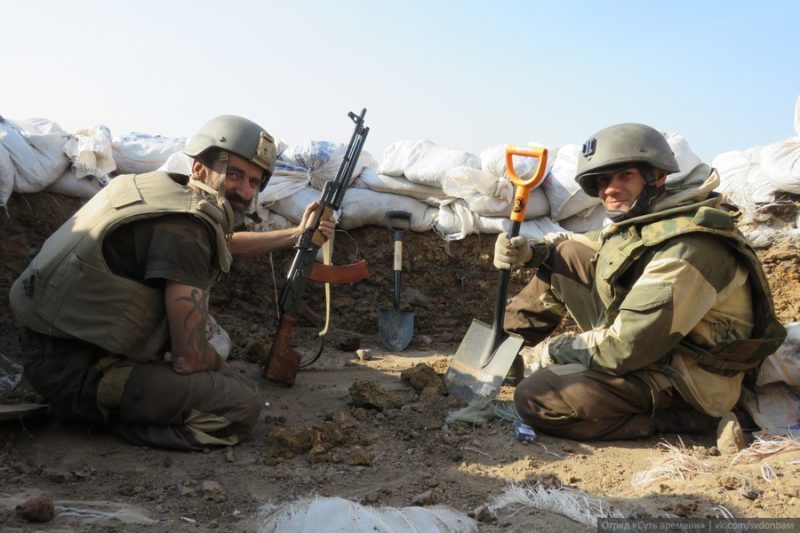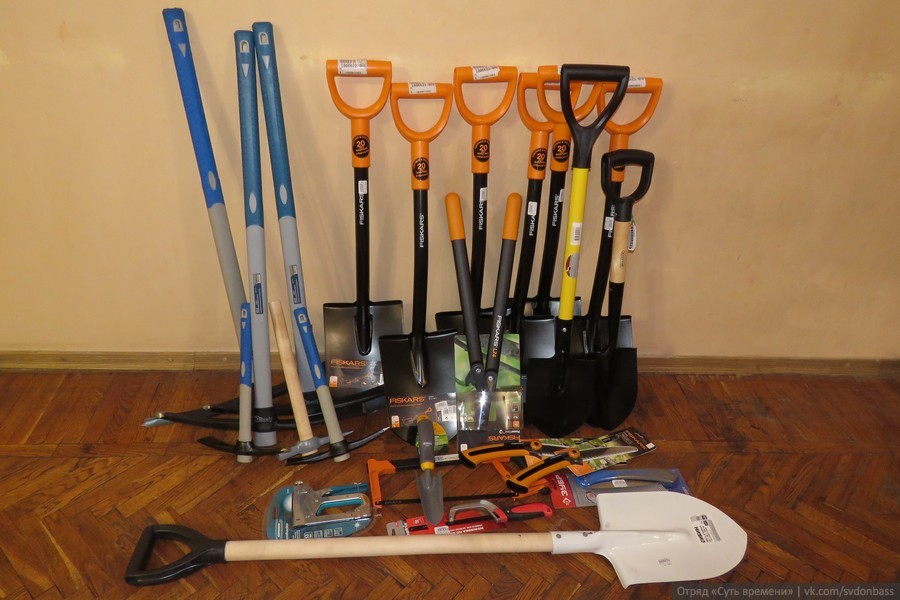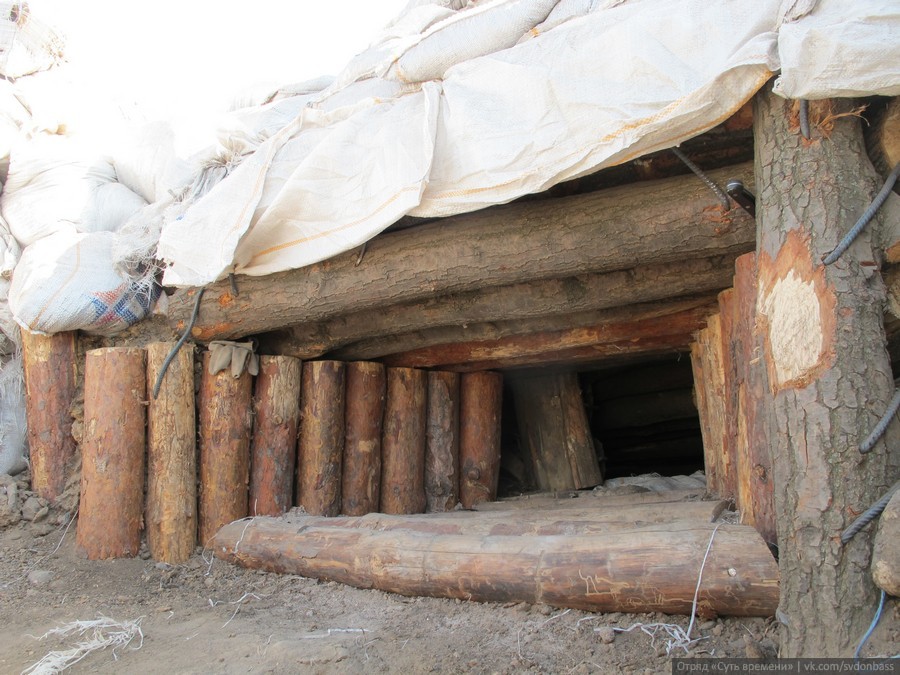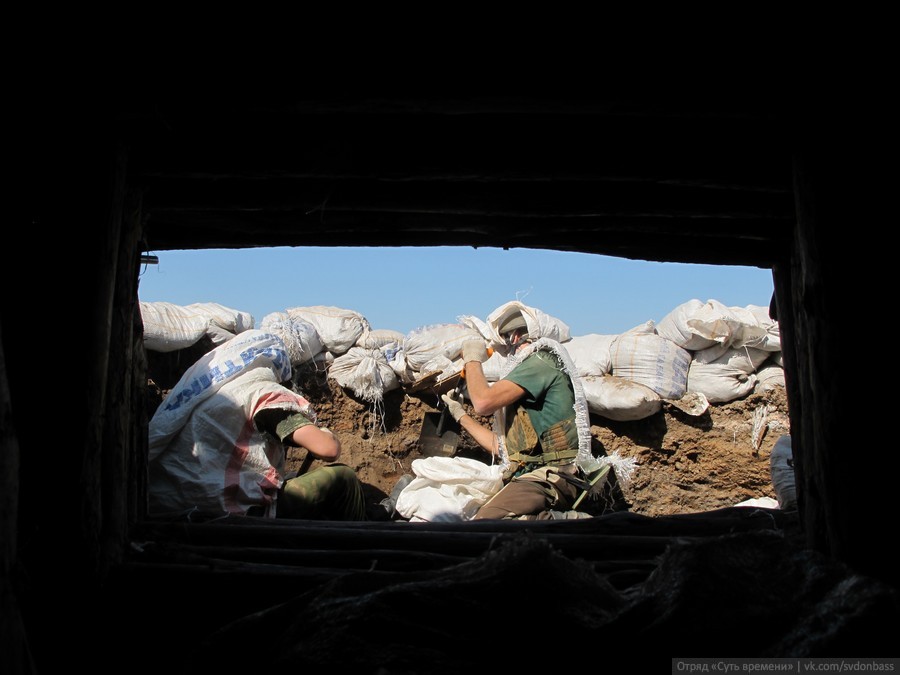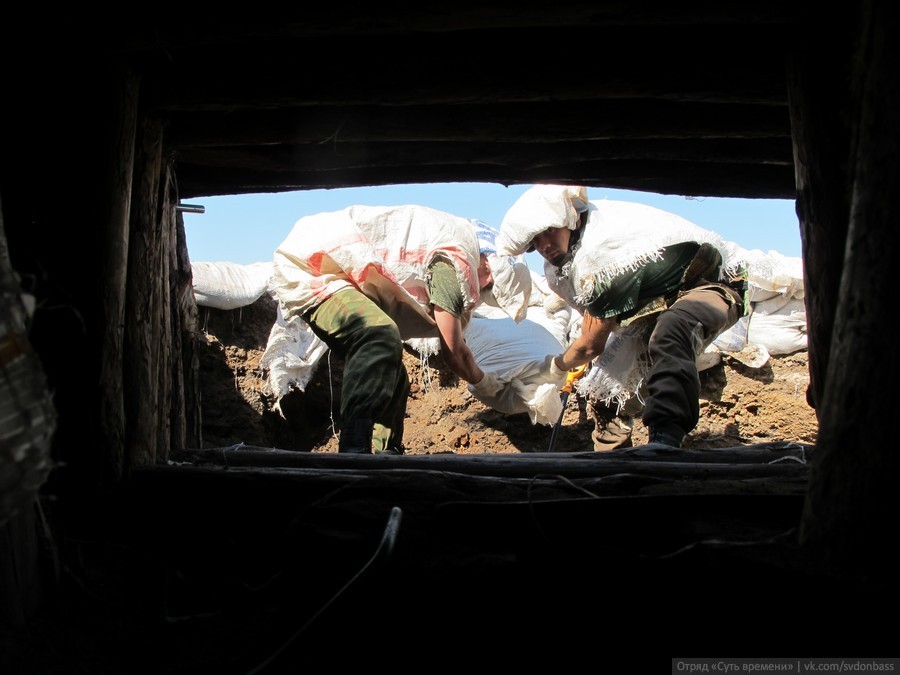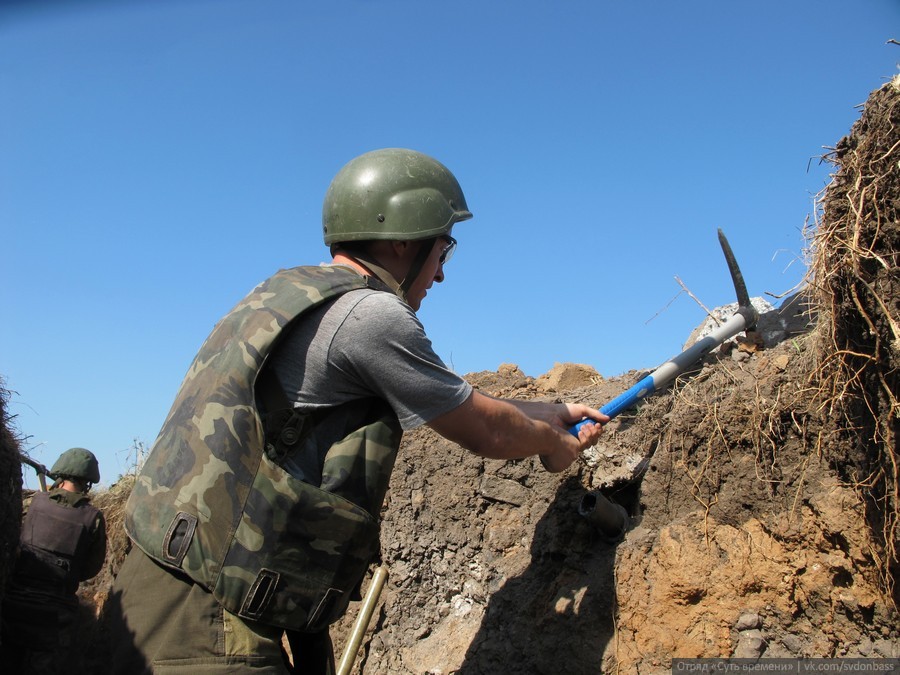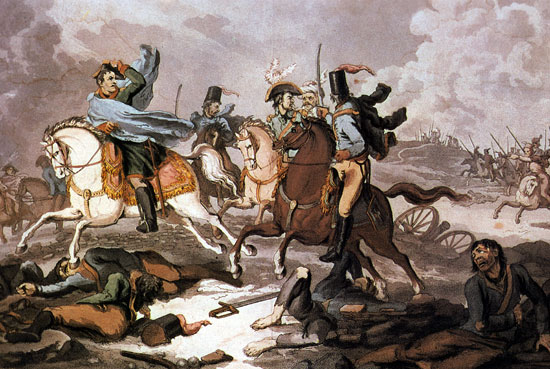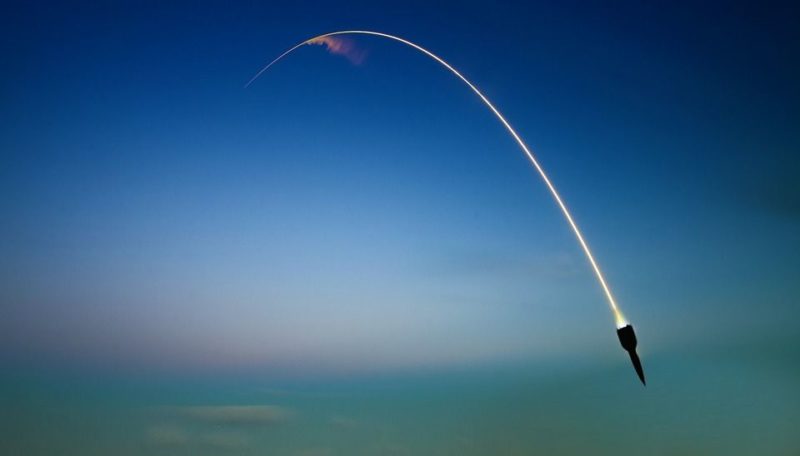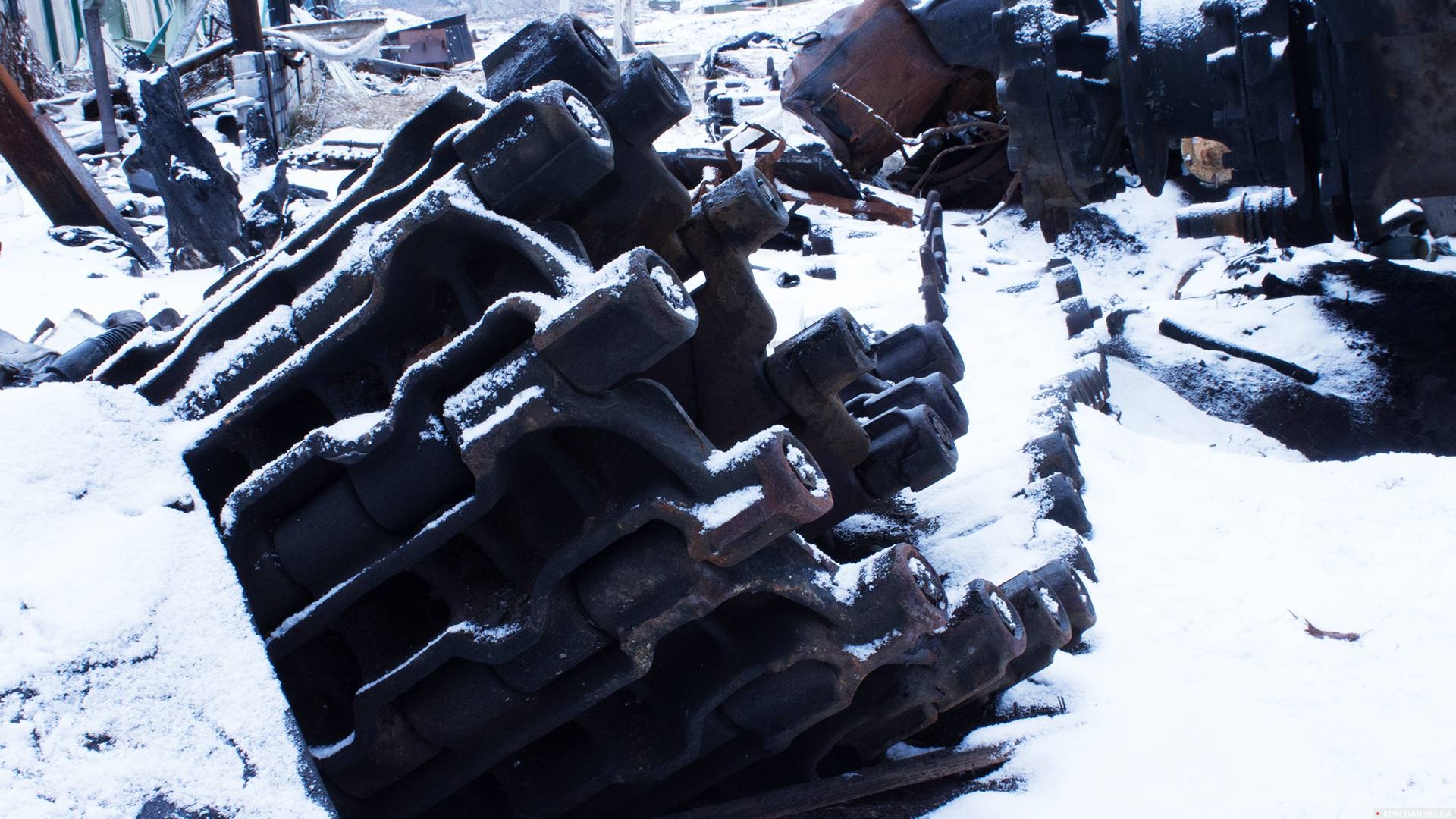28.09.2017, DPR.
We received one more lot of very good tools to prepare our positions. The tools were sent by Ekaterina, Aleksey, and our brother Dobry from Leningrad. I have no words to express how much we need them, and we started using them right away.
Thank you for your support, guys!
Preparing positions is quite a difficult task itself; first of all, we need to ensure that we can carry out our own tasks while taking into account the enemy’s firepower potential. Fortification at the frontline is complicated by the lack of heavy construction equipment which cannot be brought here; therefore, almost everything has to be done manually; this is why good tools are very important.
For example, look at the photo showing how a loophole is prepared at a firing point. First, a firing position was built; it is covered with several rows of heavy logs with compacted soil in between. To do this, we used saws, axes, and spades.
Then we get from inside the firing point through a very small window to the forward edge of the battle area. We wear the simplest and readily available disguise: sacks, which make us look funny. We choose our tools taking care of our safety. Small spades with short handles turned out to be very handy.
So, spadeful after spadeful, we move towards the enemy. The loophole has already been sufficiently enforced with soil and sand on top and at the sides. Now the firing sector needs to be cleared of the remaining soil. To keep the ongoing work secret, we pack the excess of soil in sacks and throw it inside the dugout or move it to other fortifications. This general rule is always followed.
All the movements are complicated by the need to work wearing bullet-proof vests and helmets. It is very nice if a vest is below ten kilograms while having protection class 5. For working, it is convenient when the front plate is multi-piece, consisting of two parts, one on the chest and the other on the belly. Of course, the vest is no guarantee, but still it gives soldiers extra 40 percent of survival rate, and 30 more comes with the helmet because the vest and the helmet protect the most vital and vulnerable organs of the human body which, if injured, vastly bleed and quickly become fatal.
But let’s get back to the fortification process. Can you imagine a fortified position without trenches? This is where we test the efficiency of our bladed tools: the tuber (miner’s pick) and the pick. Our experience of using the pick shows that a plastic handle is far more convenient than wooden ones as it is usually longer and handier, and it firmly holds the hack so you do not need to beat it every now and then to keep it fixed. Having a slight damping effect, such a pick goes into the soil more easily, and it is less painful to the hands when it hits stones or hard rock.
All the received tools will make our defending infantry’s work much easier and faster. Gravel, clay, sand resist our fortification, but they will not stand our consistent and hard collective work!
We thank all our brothers and sisters from the mainland for their support!

